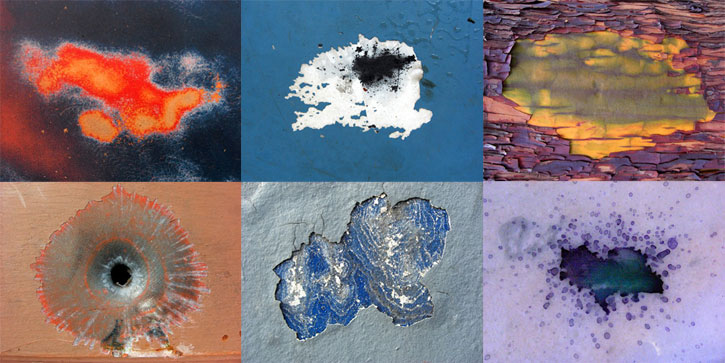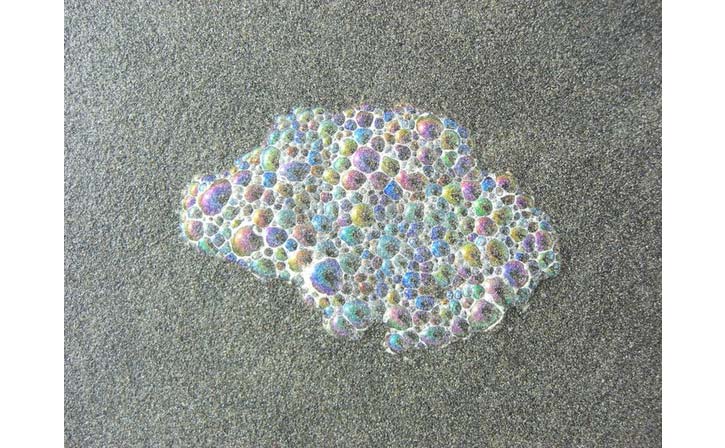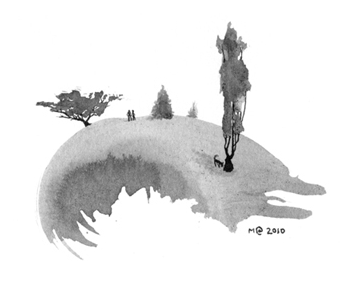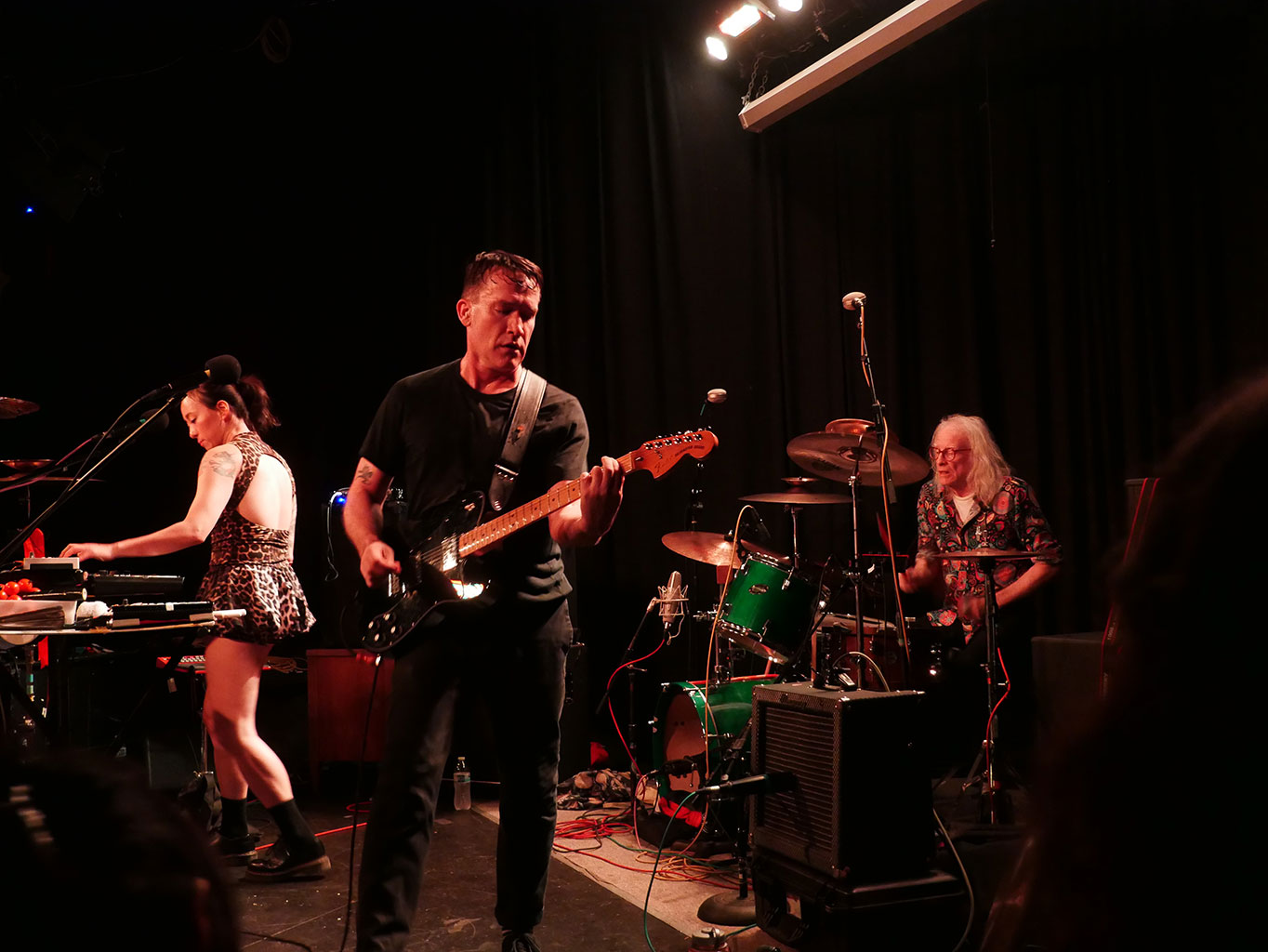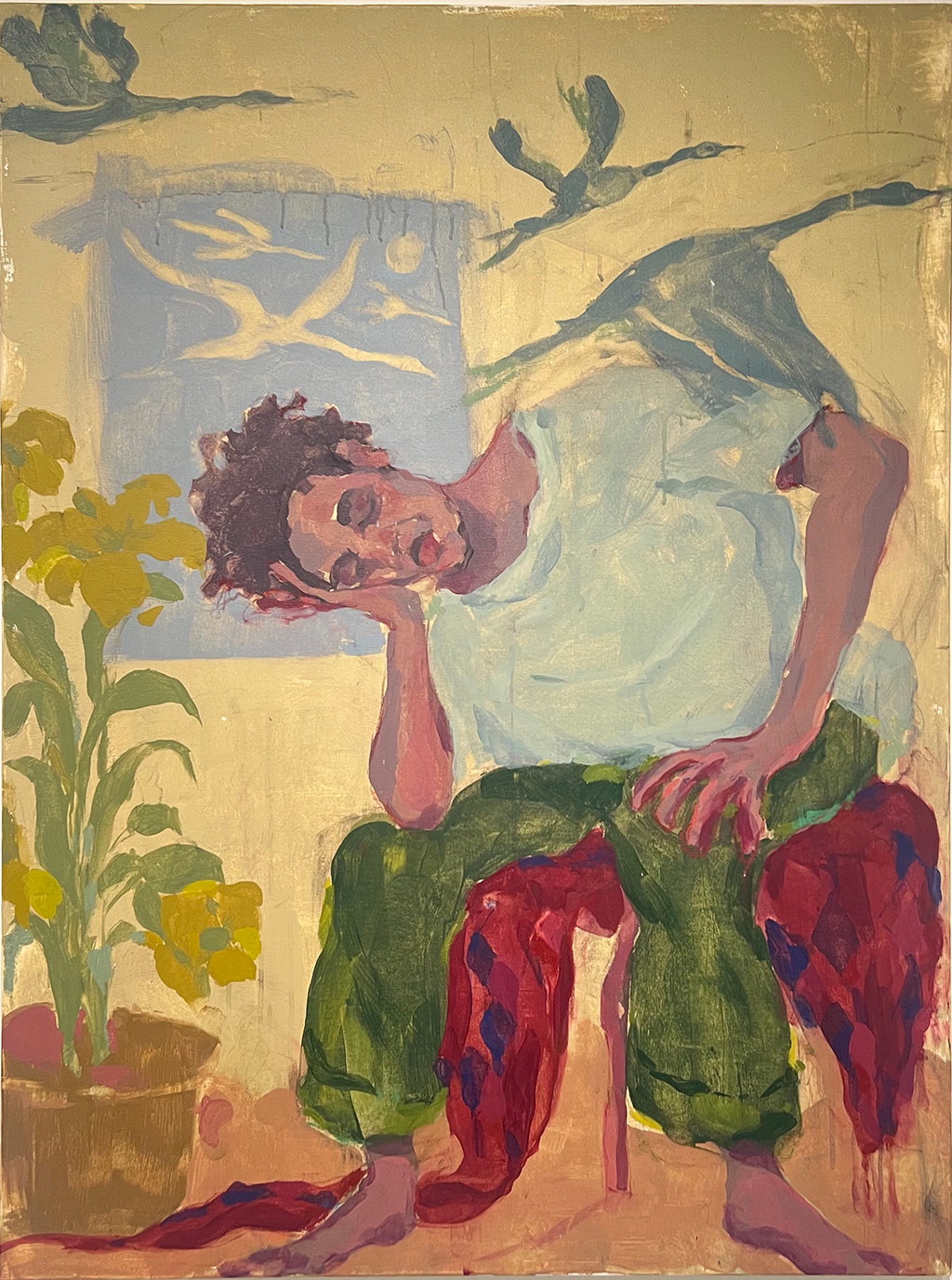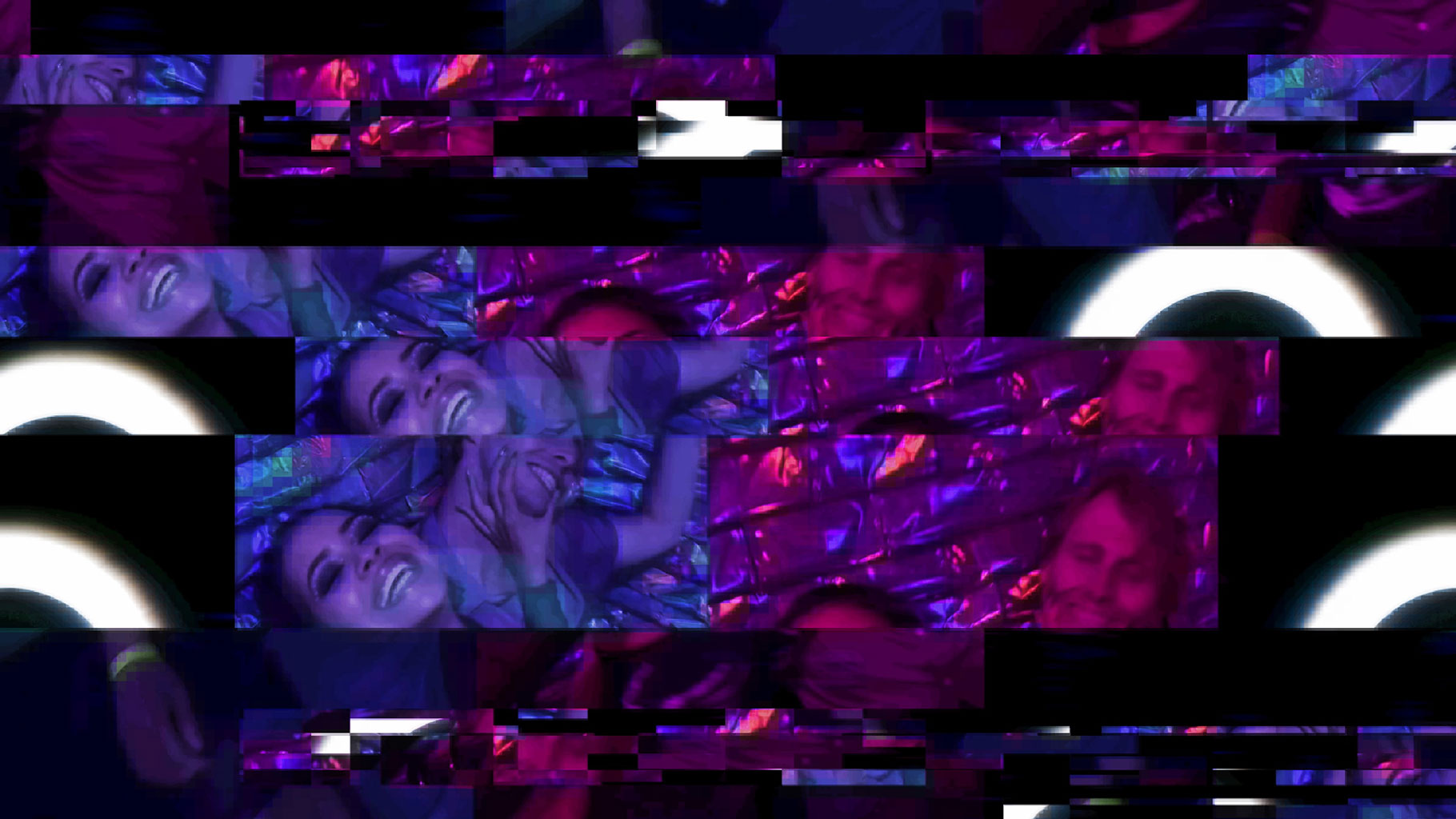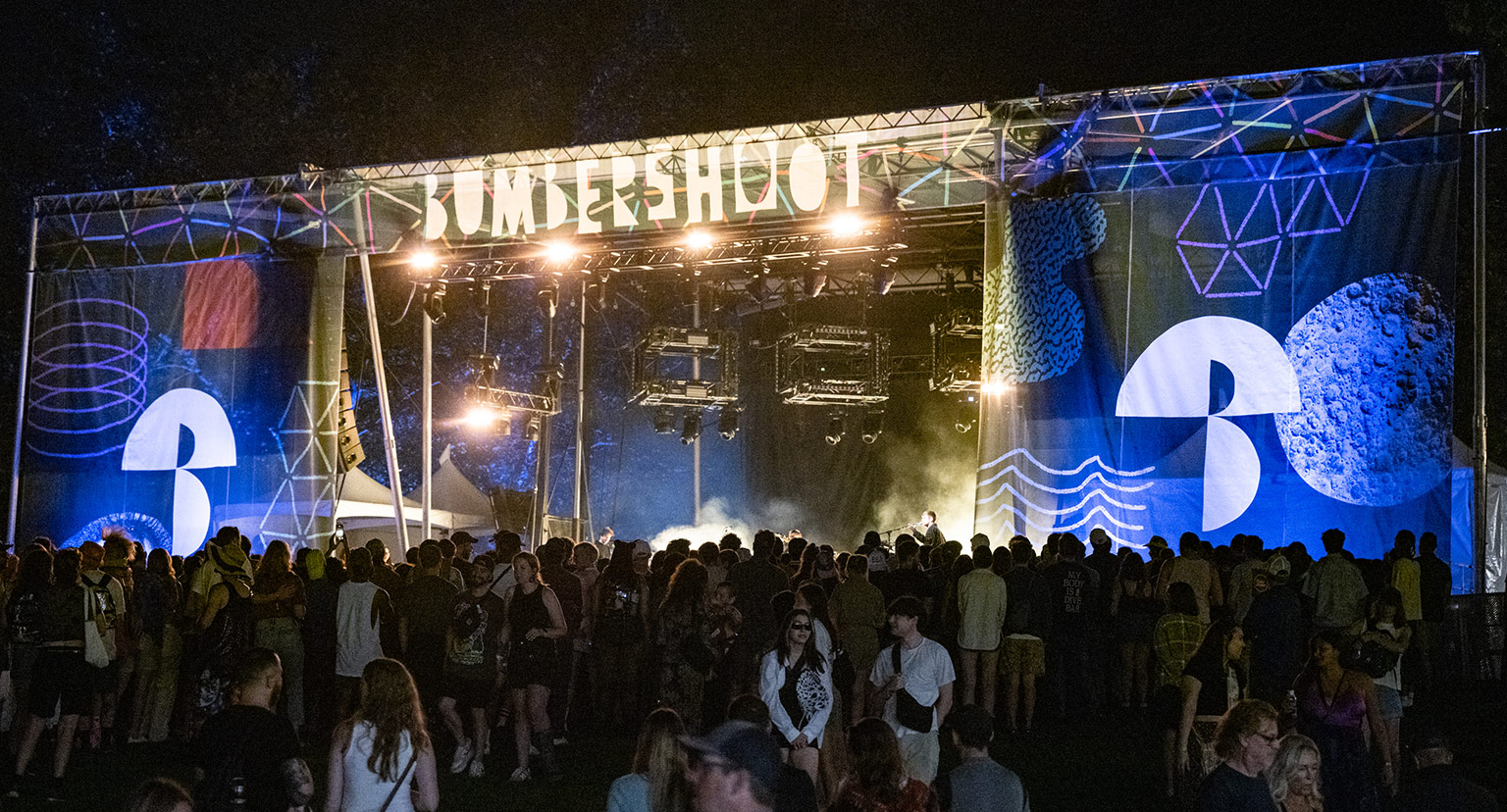
Leavitt creates with the mentality of sussing out his wildest artistic fantasies, all the while drawing equally from his knowledge in Civic Engineering and his experiences at Great Vow Zen Monastery in Clatskanie, Oregon.
In his experimentation, he has done things many would never consider. He has attempted to make ink from flowers petals; he has thrown melted candle wax onto frozen ponds; he has created sculptures from liquid clay. His interests flow in many directions, and these divergences are present when one looks at his entire body of work. The projects he undertakes are always well-detailed within his mind; every piece of every series falls in line with subtle stylistic rules yet deviates within a larger framework.

Tree Series
His Tree series contains dozen of pieces, all of which begin with a single brush stroke. At times, the brush strokes are manipulated with materials such as paper towels or diluted with water; other times, they are purely ink. Careful study of the initial forms then inspire Leavitt to craft the final works, which always revolve around trees but are otherwise extremely variable. Leavitt’s Tree series takes his work to the next level; with it, he received his first solo show and found a new sense of self-discipline, discovering the importance of simplicity, smallness, and negative space in his own art.
He explains how he began this series, saying:
“I was reading a book called The Creative Habit by Twyla Tharp, a choreographer. And it’s sort of a book about how to form useful habits creatively if you want to make that your life. So… I was living at Great Vow Zen Monastery where I had been before, and I decided to try and do my art in a more disciplined way. I started off with doing art for a designated amount of time per day; I thought that it would also be nice if I actually finished something because of that habit of doing a lot of art and never really finishing. I decided that I would put out some smaller pieces of paper and make myself finish… my project would then be, within the two to three hours that I set aside to do as I can. I had decided I would do five a day.”
Below, Leavitt shares insight on his thought process behind individual pieces in his Tree series.

“Untitled 7 A.K.A. Vibrant Birch involved a happy accident. I put way too much ink on the page, then blotted some off with a “quilted” paper towel, and the result was a patchy texture. It looked like foliage to me, so I decided to make it foliage. I think it was the first piece where the initial broad stroke was the background rather than the ground itself. I used a box cutter to remove ink from the page to create the white branches of the trees. I also like how the bit of splatter gives a clue to the energy in the initial stroke.”
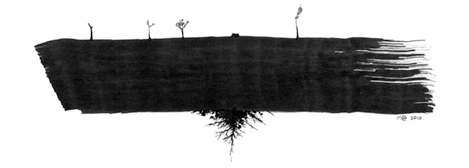
“[This] one is called Untitled 4, but in my mind I call it ages, because it depicts young trees and a very old tree, which is actually a stump. The roots from the tree stump are very deep and visible below the broad brush stroke, while the younger trees’ roots are not. This is one of the drawings I did the first time I sat down to work on this series, and it was a point when I saw a lot of potential: just by depicting trees as they are, a profound statement had emerged, which was not premeditated. It was an exciting moment.”
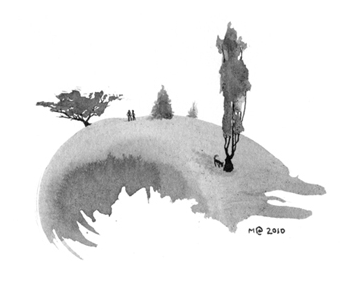
“Arboretum came very soon after that one. It is one of the two smallest pieces, along with The Long Dead and Forgotten. All of the illustrations before it had started with a roughly rectangular stroke from a foam brush in pure black ink, but this time I used diluted ink and a bristled brush. This one was exciting because just with the initial broad stroke so much of the work was done.
The way the paper absorbed the ink — it had a sort of gradient, so it seemed three-dimensional. I saw a hill and went with that. This added a very fun dimension to the project: working with whatever happens to emerge in that initial stroke. That aspect of the project always reminds me of a chant they do at the monastery called “Liberation from all obstructions,” which is about choosing whatever arises.”

“The Long Dead and Forgotten (upper left) depicts a graveyard with lots of simple, small identical grave markers. In my imagination, it’s not a graveyard that can be seen from any road; it’s not on a map, and it doesn’t even have a colloquial nickname. You might stumble upon it, enjoy exploring it a bit, move on, and not mention it to anyone. This piece feels simultaneously very dark and peaceful. Several of the tree drawings — like Still (upper right) and Murder — fit into that category, which is my favorite.”
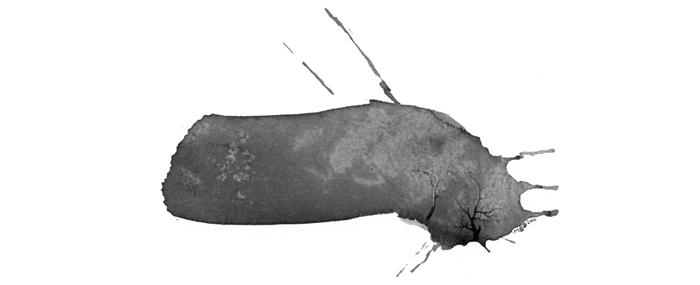
“Some of the drawings required especially intense concentration. Daybreak (above) was one of those. In the initial brush stroke, I saw an early morning sky above a grassy hill. All I added were the trees, but they are what reveals that that’s a hill there, and that the sun has just barely peeked over the horizon, and specifically it’s the lighting one the trees that makes the case. It was really finely detailed work with a box cutter. A lot of holding of the breath was involved.”
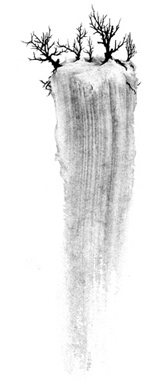
“This series got me to do so much exploration. Ghostly is a good example of that. It’s the only piece that involved a different kind of ink (I did one using goop that dripped from an iris, but I don’t include it in the series). I found a charred window frame on the sidewalk in the industrial district, broke off a piece, put it in a baggy I happened to have on me, and took it to my studio. Then I added water and tried to pulverize it. The ink I normally use is made from soot, so it didn’t seem so crazy. Well, my mixture didn’t work out very well, but I did try it out on some paper. Ghostly is made from a smudge of this homemade “ink.” It’s always exciting to enter new territory, having no idea what might happen.”
Butterflicker Series
Leavitt’s Butterflicker series is a combination of photography and digital manipulation. Using what is essentially a lightbox, Leavitt wipes streaks of liquid clay with a sponge to create 2-dimensional forms which, in his own words, are reminiscent of butterflies. These images are then photographed and lightly manipulated in Photoshop to make them feel more 3-dimensional and gallery quality.
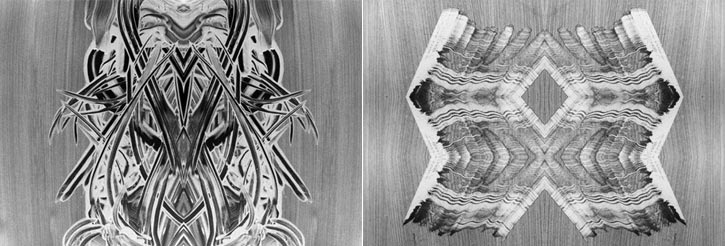
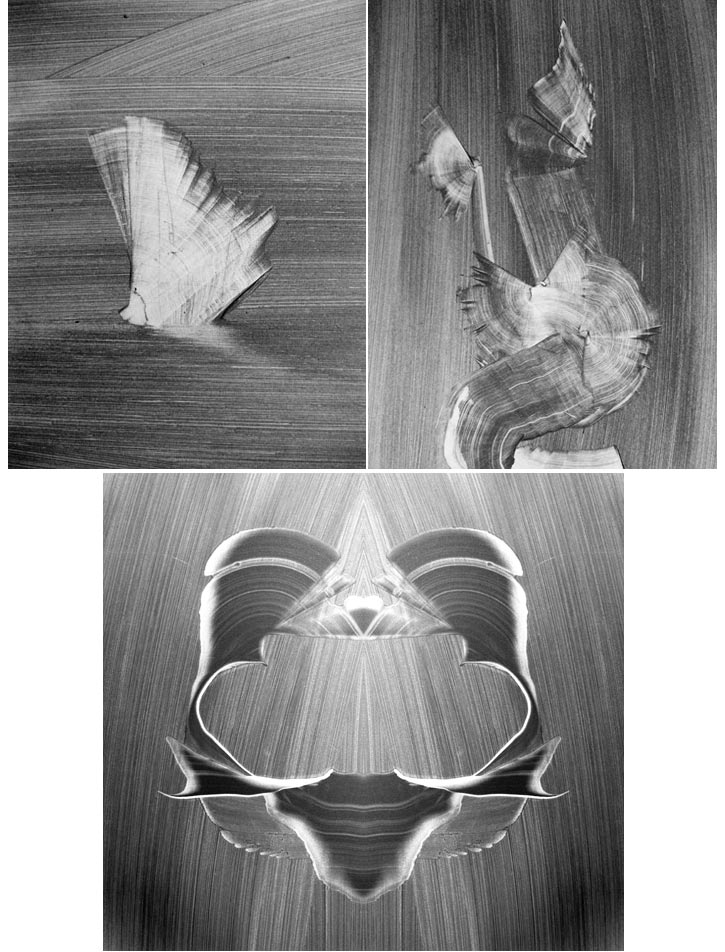
Blobs I Heart Series
With this playful series, Leavitt photographically documents his surroundings by focusing closely on “blobs” which occur naturally and unnaturally, through human interaction as well as indiscernible means. Leavitt has a series of rules for his chosen blobs, and explains them, saying, “Blobs have finite boundaries completely contained within the photo, I shoot them head on, as I find them, and they are generally made without intention, as far as I can tell.”
